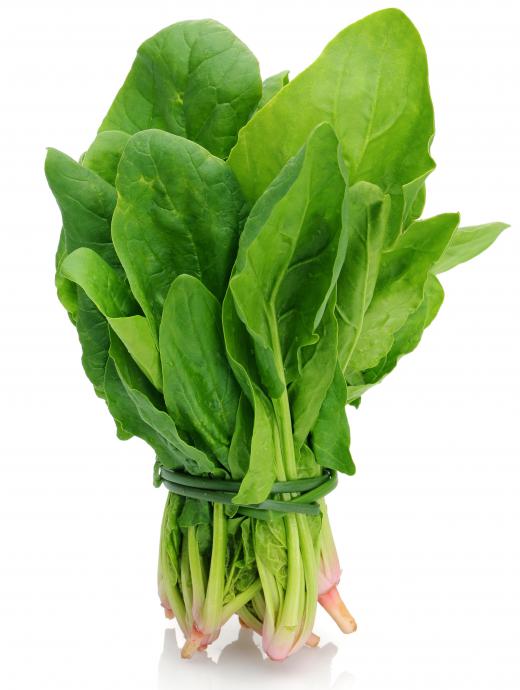What Is the Structure of Vitamin K?
Vitamin K is an essential vitamin that the body uses in the process of blood clotting, and the structure of vitamin K depends on its chemical form. Three main forms of this vitamin exist, known as vitamins K1, K2, and K3. K1 and K2 occur naturally and can be found in foods such as spinach, while K3 is a synthetic form. All three of these forms contain a structural component known as menadione, an organic compound containing carbon, hydrogen, and oxygen.
The basic structure of vitamin K consists of a menadione complex bound to a string of atoms known as a side chain. The side chain is composed of hydrogen and carbon atoms and varies in length and shape based on the type of vitamin K. Variations in the side chain cause the different forms of vitamin K to behave in different ways, but all forms of the vitamin use the same basic mechanism in assisting proteins in forming blood clots. Menadione, not the side chain, is the functional group, or the part of the chemical structure of vitamin K that determines its properties.

The menadione component of the structure of vitamin K can be visualized as two closed rings of carbon atoms linked to one another. On the outside of the rings, the carbon atoms are bonded to hydrogen atoms along with one external carbon/hydrogen group. Two oxygen atoms are bonded to opposite carbon atoms in one of the rings. The structure contains, overall, 11 carbon atoms, eight hydrogen atoms, and two oxygen atoms. In vitamins K1 and K2, one end of the entire complex is linked to the side chain.

Vitamin K1 can be found in leafy vegetables and other foods such as beans and some types of meat. Chemically, it is also known as phylloquinone. Bacteria in the intestine modify the structure of vitamin K1 into K2, or menaquinone. The main difference between the two forms is in the structure of the side chain.
Vitamin K3 does not include a side chain but exists only as menadione. As it is an essential component of the structure of vitamin K, menadione, or K3, can be used as a precursor to other forms of the vitamin. For example, the human body is able to convert K3 into K2. Despite this, the use of vitamin K3 as a dietary supplement is banned in some countries due to its potentially toxic effects.
AS FEATURED ON:
AS FEATURED ON:














Discuss this Article
Post your comments